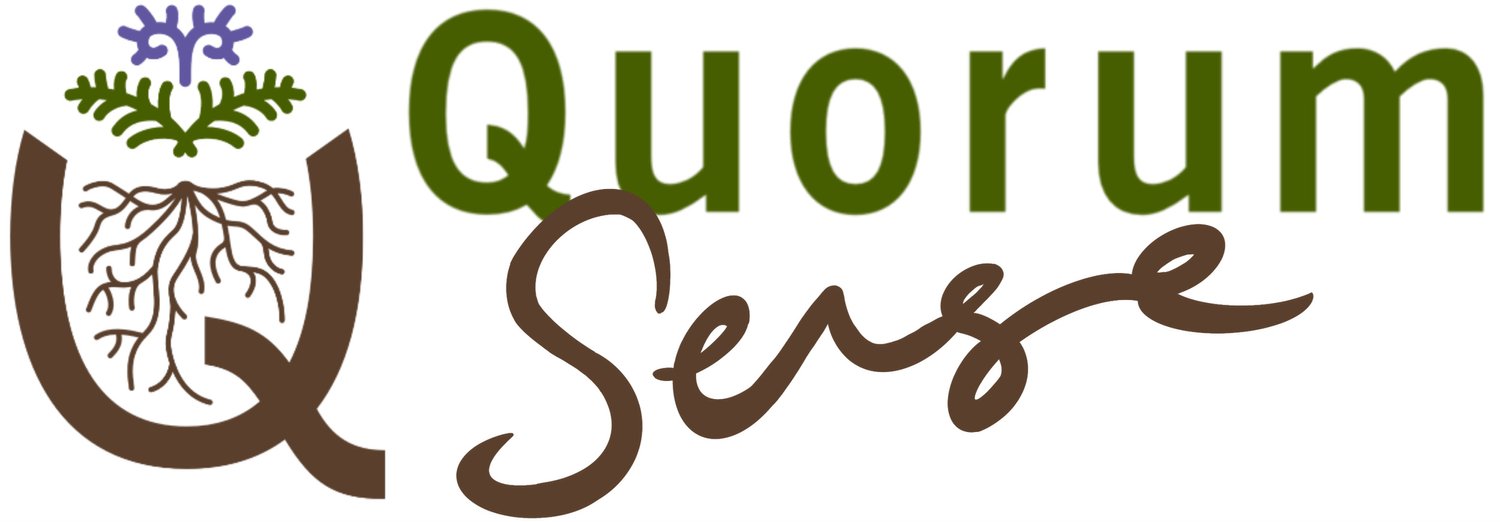How the Rutherford's healthy soils are restoring the water cycle in Central Otago
Video description: Tim and Camilla Rutherford share their journey into soil health and regenerative management, and how this has shaped their vision for the future of The Point Station.
The Point Station covers 5500ha in a diverse but brittle Central Otago landscape. Successive dry years in the early 2000s got 5th generation farmer Tim Rutherford questioning their system and in 2015 he stumbled across soil health - a light bulb moment.
Seven years focus on soil health, regenerative management and holistic decision-making has transformed the health and resilience of their farm, driving an exciting vision of a self-sustaining and resilient landscape, business and community.
This case study explores the story of Tim and Camilla, their observations, learnings, results and next steps.
“I really felt like a fire had been lit under [Tim], the spark came back, and the joy had been put back into farming”
Camilla Rutherford, Central Otago beef and sheep farmer
The Rutherfords journey
Farm outline
Who: Tim and Camilla Rutherford
Location: Tarras, Central Otago
Farm: 5500ha, including around 250ha irrigated flats, 100ha irrigated terraces, 500ha dryland terraces, 4600ha high country
5000 merino ewes, 120 breeding cows plus spring/summer beef trade cattle
Climate: 300-500mm annual rainfall with hot, dry summers and unreliable autumns
Vision/Goals: A self-contained and self-sustaining farm resilient to future weather, climate, energy, regulation and market changes.
Building soil carbon and increasing the number of shade/shelter trees in the lower country.
A regenerative lifestyle for their family, including adventure and travel.
“After everything we’ve been trying we’ve found that our most effective inputs are grazing management and irrigation management really… that’s where we are finding our biggest return now.”
Tim Rutherford, Central Otago beef and sheep farmer
Key principles
Keep the soil covered
Keep grass in a vegetative state
Improve soil water infiltration rates
Grazing and irrigation management deliver the best returns on investment
Key policies & practices
100% direct drilling into decent residue / soil armour
Keep subdividing the whole farm
Keep pasture covers high across the farm to deter rabbits (they love bare ground).
Pasture recovery period: fast growth = fast moves, slow growth = longer recoveries
Grazing management:
Daily breaks on the flat irrigated diverse pastures
2–3 day breaks on the irrigated terraces
5–10 day moves on the higher dryland country depending on mob and paddock size
Nitrogen applied as foliar via ‘Tow and Fert’ applicator as well as trace elements
Lime and trace elements support microbes to ‘unlock’ built-up phosphate reserves
Build soil organic matter and plant more trees to increase resilience, especially if water rights are lost in future
Family time off and away from the farm
Holistic decision-making
Monitoring progress
Tim’s approach to monitoring is both simple and complex, relying mostly on observation and intuition, with the benefit of family wisdom passed down over generations.
However the Rutherfords have signed up to the Ecological Outcome Verification (EOV) system which has shown some positive trends between 2020 and 2022. Some examples from the EOV report are in the gallery below:
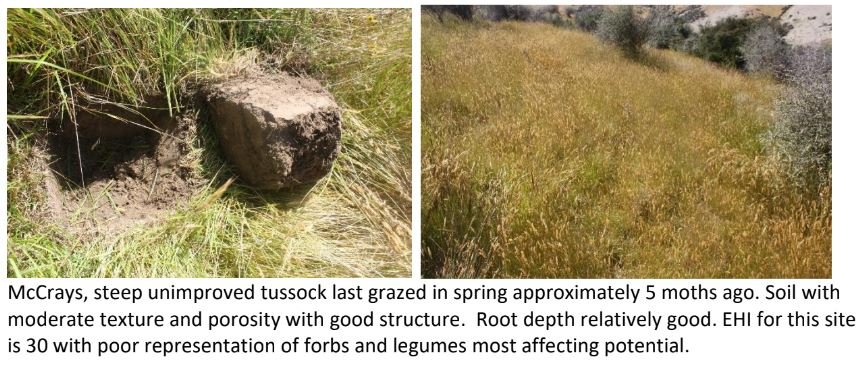

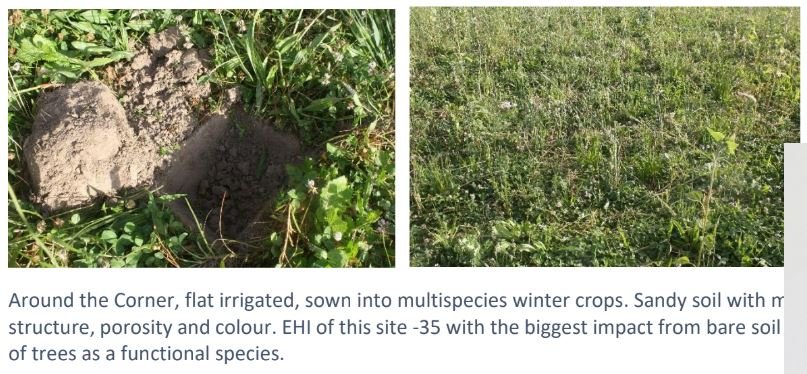
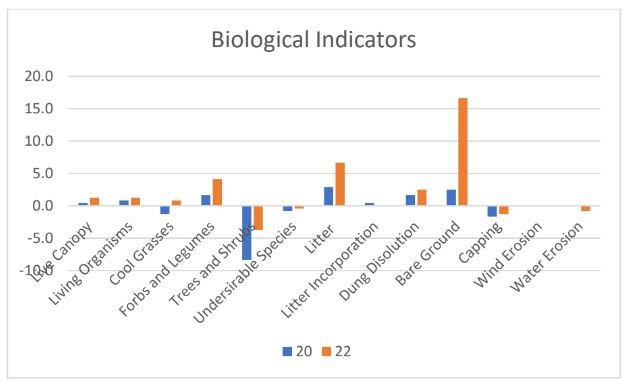
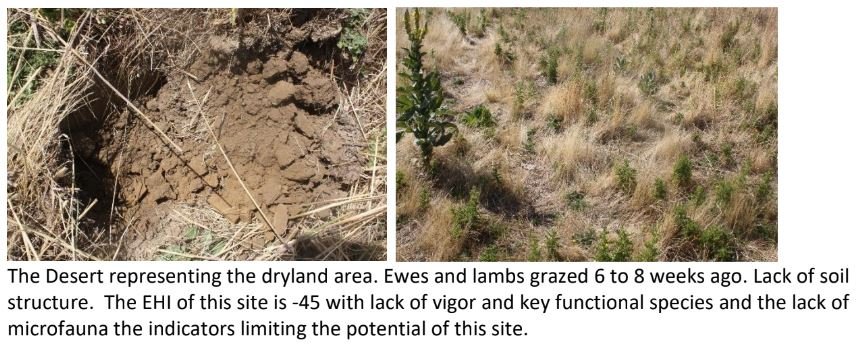
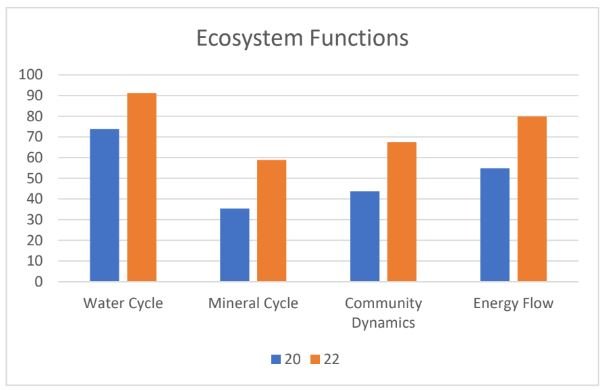
The Rutherfords have also joined Quorum Sense’s ‘Catch the Rain’ project and will be comparing the performance of their different management systems on rainfall infiltration, soil moisture retention and overall soil health.
“…then just realising how important it is to have the soil covered and have a residual. I love sowing into a tall residual because it protects those seedlings as they come up.”
Tim Rutherford, Central Otago beef and sheep farmer
Related content on: soil health
Disclaimer: The information, opinions and ideas presented in this content is for information purposes only and does not constitute professional advice. Any reliance on the content provided is done at your own risk. (click here to view full disclaimer).
